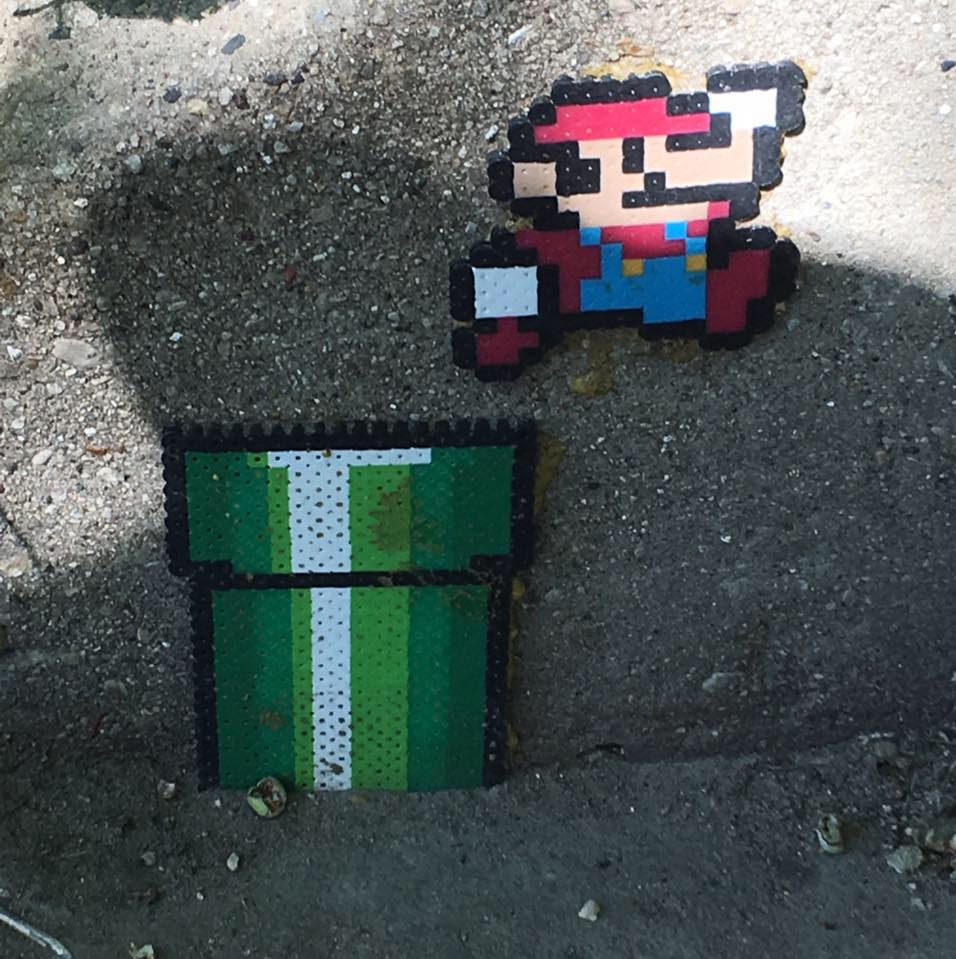.
ELI5: when electricity moves, it creates an area around it that pushes on things nearby, and that makes those things move. Some things are more sensitive to that electric force than others, which is called magnetism. It’s an invisible force though, just like how you can’t see gravity. When something that is magnetic is near electricity, they react to each other and that causes things to move, or glow, or heat up, and other stuff.
Beyond 5:
Most people have electricity explained using the water analogy. That is that electrons flowing through a wire are analogous to water flowing through a pipe. More conductive or larger wires are like having a bigger pipe. More flow equals more electricity, which equals more power.
This isn’t quite right. The flow of electrons doesn’t create any power. The flow of charged particles creates electromagnetic fields. These fields result in a physical force on objects that are responsive to those fields. Think of it like gravity. Gravitational fields affect matter with mass, and electromagnetic fields affect matter through an inherent magnetic quality. So, the electrons don’t actually push on anything, they create an electromagnetic field, and that creates a physical force.
Veritasium does a pretty good job of explain these in better detail with these two videos. Tiny Magnet (https://www.youtube.com/watch?v=hFAOXdXZ5TM&ab_channel=minutephysics) & Electricity Misconception (https://www.youtube.com/watch?v=bHIhgxav9LY&ab_channel=Veritasium)
TIL is all I am able to say now.
This is correct. The water analogy has limitations that are exposed when you start to talk about transmission over longer distances or very small things like computation circuits. Having said that, humans have a hard time understanding this explanation because we don’t have senses that even remotely describe electric fields.
tl;dr it’s magic. It’s all magic. Zap zap bzz bzz
Any sufficiently advanced technology…
This is a great answer, thank you! The water analogy always felt incomplete to me in highschool.
So how do light bulbs work? I’ve always thought that the electrons bump into atoms of the tungsten, and the “friction” heats the filament enough to generate light. Since tungsten isn’t magnetic, I wouldn’t think that it would interact with the electric fields produced, but does it?
Someone else will probably explain this in a much better way, but I’ll give it a go. I’ll explain DC, AC is a bit more complex.
Current is the flow of charge. Atoms are made up of a nucleus, surrounded by electrons. The electrons are loosely held, meaning they can travel around to other atoms.
In simple terms, batteries have an accumulation of atoms with extra electrons which are lost more easily, meaning the electrons want to move away. This is known as electric potential. Since there is a lack of electrons (aka positive charge) in the opposite terminal of the battery, the electrons move from the negative to the positive terminal, or we say the positive charge moves from the positive to the negative terminal, through the circuit.
Metals are known to let charge flow within them, so they are used as conducting wires in circuits. When electrons flow through the circuit, the energy with which they flow can be harnessed. Example, if we add a resistance to their path which glows, you have a bulb.
Motors work in a different way. When current flows through a circuit, it has a magnetic effect on its surroundings, so it can interact with magnets. This is harnessed to make rotational motion. It helps if you watch videos, as the visual representation is infinitely better.
I am also still learning, so if anyone finds any mistakes whatsoever, please do let me know. I intentionally didn’t use the falling water analogy, as that didn’t help me at all when I was learning this topic.
@D-ISS-O-CIA-TED@kbin.social
AC is actually a little easier to explain.
Imagine you’re holding each end of a rope that is looped around a pulley. When you pull on the rope with one hand, your other hand goes in the opposite direction and the pulley turns a little bit. You’ve transfered a little bit of work to the pulley, which can be used to do other things. But “you” have only moved a little bit. You pull your stretched hand in, and you other hand goes out and the pulley does a little more work. Now do this movement 60 times a second (50 in some parts of the world), and you’ve just discovered alternating current electricity. You don’t have to move much in order to send energy over long distances, which is one of the advantages of AC over DC.
To add to this, imagine that pulley on the end is connected to another pulley through a few gears. When it spins one way, it turns the last pulley one way. When it spins the other, it meshes with another gear to turn the last pulley the same way.
You’ve converted AC current into DC current, which you can use to drive a motor in one direction. This gearing is usually done via a series of diodes.
So in an AC current the electrons are just jiggling back and forth? How far do they move through a wire, I’d imagine they jump like a few meters back and forth if it’s only 50/60 times per second.
It’s not really the electrons moving. It’s the electromagnetic field potential that’s moving. The rope is that field. And the distance it moves isn’t measured in meters, but in volts. In most cases, around 240 volts (more or less…but that’s a whole other discussion).
A lot of this is hard to wrap your head around because you can’t physically see these forces, only measure them with instruments. We’ll dive a little deeper while still trying to keep the rope metaphor going.
Imagine each electron in a wire as stationary, and all standing in a line next to each other all the way down the wire, each connected to its neighbour by a loop of rope. If you turn one of these electrons, it causes the one beside it to turn, which causes its neighbour to turn, etc all the way down. Our pulley is attached to one of these electrons. You pull the rope one way, it turns the pulley, which turns the first electron, which transfers that energy all the way down the line. How far you pull in one draw is the voltage. How hard you pull is the amperage.
This is the basis of a generator. A magnet (our pulley) is passed over a coil of wire, which induces an electromagnetic field (our rope) in the wire. It makes the electrons “turn”, and sends that energy down the entire length of the wire. Nothing really moves except for the electromagnetic field.
I could visualize your description of this, but ONLY because I recalled this great little Steve Mould video where he talks about a really neat toy called Spintronics. It teaches electricity through the analogy of gears, ratchets, and pulleys of a “mechanical circuit.”
What stops a battery from just equalizing its own charge internally? By which I mean, why do the electrons have to go all the way around the circuit to get to the negative terminal?
High resistance materials between the areas of charge. Nature is inherently lazy, and will take the lower resistance path through the circuit.
Batteries have an insulated separator between the positive and negative sides. They design the battery with a particular maximum voltage in mind, so they engineer it with a separator that is always a higher resistance. Thus the electrons will only be able to make the jump when a circuit with lower resistance is formed.
What would happen if that insulating barrier broke? Would the battery explode or just heat up or something?
deleted by creator
Actually ELI5: You know those really old buildings with a paddle wheel on the side, sitting in a river? The river water pushes the wheel to turn it, and then we can connect the wheel to stuff like a sawmill or whatever.
Now, let’s say you want to have a sawmill down the road instead of right on the river. If you’re smart, you can find a way to stick a big hose in the river and take all that water to the other sawmill, and push a wheel there, then use another hose to put the water back in the river. That’s basically what a wire does.
The atoms in the negative side would be more stable with less electrons, the atoms in the positive side would be more stable with more electrons. When these terminals are set up in a way where the electrons can flow between them, the electrons do; this makes the system more stable. Energy is always conserved, so when the electrons flow and the system becomes more stable, energy is released.
Imagine a hose filled with water. When you connect the hose to a faucet and put more water in, the water in the hose is gonna shoot out, right?
The copper wire is the hose. The electrons are the water. The pressure of the water is voltage. The movement of water is the current.
Try it out yourself! https://www.cei.washington.edu/lesson-plans-resources/water-model-for-electricity/The easiest I’ve seen it explained is like a water pipe that represents the flow of electrons in an electrical circuit. The pressure in the pipe is voltage (volts), the flow through the pipe is current (ampere), and resistance (ohms) is the size of the pipe. Opening the valve of a water pipe is like turning on a light switch. You start flow through the circuit. The faster the flow (ampere), the lower the pressure (voltage), while the pipe size (ohms) remains constant.
Get in the magic school bus and learn: https://m.youtube.com/watch?v=cyGBhw3gR4c










